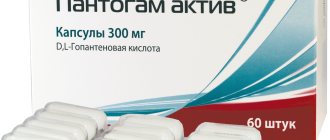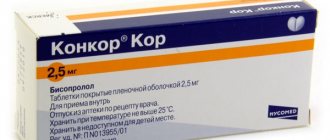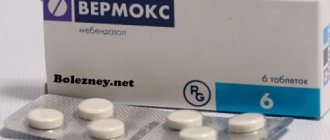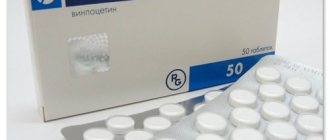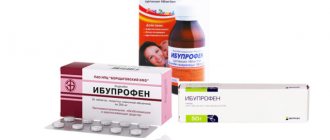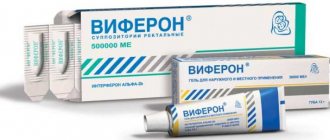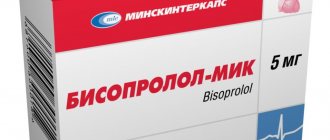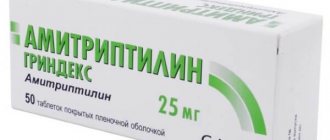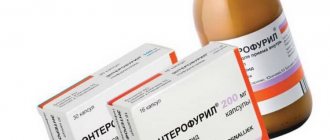When a baby is born, his intestinal microflora is clean, and for the first time begins to receive the necessary microelements through breast milk. But after a couple of weeks, the small body begins to lack beneficial bacteria that help in the digestive process.
At this moment, stomach cramps, restless days and sleepless nights begin. The medication plays an important role in maintaining and restoring the digestive system. It prevents the accumulation of gases and relieves other ailments.
Beneficial bacteria, which, when multiplying, stabilize the intestinal flora, have a positive effect on the gastrointestinal microflora.
In what form is it better to use bifidumbacterin for infants?
Bifidumbacterin is produced in the following forms:
- Lyophilisate. This Bifidumbacterin can be taken orally after mixing with water or used for external treatment. It is represented by a light gray or beige mass. The drug is available in bottles packed in a box of 10 pieces. There are also packages of 12 and 14 bottles.
- Powder. It is sold packaged in sachets in packs of 10 or 30 bags. A suspension is prepared from this powder, which the patient drinks.
- Pills. One package includes from 20 to 60 tablets.
- Capsules. One jar contains from 10 to 50 capsules.
- Rectal/vaginal suppositories. They are sold 10 pieces per pack.
Bifidumbacterin forte is also produced, the difference of which is the presence of activated carbon in the composition, due to which bacteria are evenly released in the intestines, and toxic substances are eliminated faster. This drug is presented in gelatin capsules and powder, which is taken orally.
Bifidumbacterin should be stored in a dry and cool (no more than 100C) place. It is allowed to keep the drug at room temperature, but not more than 10 days. The use of Bifidumbacterin is possible within 1 year from the date of its release; after this period, the drug is considered unusable.
The drug for infants is available in several forms: capsules; pills; dry powder in ampoules and vials; liquid in ampoules; candles.
For newborn babies, it is better to use liquid Bifidumbacterin or in powder form, which must be diluted.
Forms of release, analogues and prices
“Bifidumbacterin” in the form of a lyophilized powder for oral administration in a dosage of 5 doses in one bottle of 10 pieces in a box is produced by domestic companies, Microgen NPO JSC, Vitapharma CJSC.
“Bifidumbacterin” and “Bifidumbacterin forte” in bags of powder, five doses each, in packages of 10 and 30 pieces, made in Russia.
Medicine in tablets of 1 and 5 doses by Ecco Plus LLC and Vitapharma CJSC, produced in Russia.
Capsules with bifidobacteria, 5 doses each, domestic and JSC Ecopolis.
Suppositories for vaginal and rectal administration, containing 1 dose of a medicinal substance, are produced by FSUE NPO Microgen and JSC Partner of the Russian Federation.
The price range for these medications in pharmacies ranges from 88 to 350 rubles per package, depending on the form of release and the company manufacturing the drug.
Medicine Bifidumbacterin
According to the pharmacological classification, the drug Bifidumbacterin refers to a means for regulating the balance of intestinal or vaginal microflora. The active ingredient of the composition is active bifidobacterium bifidum, which is known for its beneficial properties for the human body. The drug is safe, suitable for infants, adults, and pregnant women.
| Capsules | Powder | Liquid concentrate | Candles | |
| Description | Hard gelatin, white with a blue lid, inside there is a light gray powder with activated carbon particles | Gray with black accents | Cloudy liquid with a characteristic sour milk odor | Solid suppositories of white-yellow color, torpedo-shaped |
| Concentration of Bifidobacterium bifidum, million CFU | 50 per 1 piece. | 50 per 1 sachet | Bifidobacterium longum – 50 per 1 ml | 10 per 1 pc. |
| Supporting cast | Lactose | Lactose monohydrate | Solid confectionery fat, emulsifier, petroleum paraffin | |
| Format | 10 pcs. in bottles or plastic jars, 18 pcs. in bottles, 30 pcs. in bottles or plastic jars with instructions for use | 10 or 30 sachets per pack | Ampoules of 5, 10 ml | 10 and 30 pcs. |
Bifidumbacterin is a preparation of biological origin, a probiotic, whose effect is due to the high concentration of bifidobacteria absorbed on activated carbon particles. They are antagonists of harmful and opportunistic intestinal microorganisms, which include salmonella, Staphylococcus aureus, Proteus, Klebsiella and Shigella.
Once in the body, bifidobacteria quickly restore normal microflora, which accumulates toxins entering the body, decomposing them into safe components. Living bifidobacteria form microcolonies, intensively activate metabolic processes and restore normal microflora, parietal digestion, vitamin synthesis, and strengthen the immune system.
According to the instructions for use, Bifidumbacterin has the following indications for use in monotherapy or as part of complex treatment:
- intestinal dysbiosis, restoration of microflora;
- acute intestinal infections;
- allergic diseases due to intestinal dysbiosis;
- acute respiratory viral infections (in combination with antiviral agents);
- dysbacteriosis or diarrhea while taking antibiotics;
- acute, chronic bronchitis, inflammation of the urogenital tract, pneumonia;
- prevention of nosocomial infections;
- chronic colitis in children, nonspecific colpitis and other gynecological diseases in adults;
- vaginal dysbiosis, thrush, mastitis, gardnerellosis, subacute and chronic stages of inflammation of the pelvic organs in women.
Indications for use and mechanism of action
Indications for use of Stimbifida:
- prevention or treatment of intestinal infections (acute and chronic forms);
- intestinal disorders (impaired stool frequency, flatulence, nausea);
- restoration of immunity (after a person has suffered a severe allergic reaction or has taken antibiotics for a long time);
- diseases of the spine, joints (effective due to the fact that it normalizes the absorption of calcium in the body, making the bone structure more dense).
Instructions for using Stimbifide are included in each package of the drug, but before purchasing and using it, you must consult your doctor.
It is strictly forbidden to take Stimbifide without a doctor's prescription, since violation of the dosage and improper use can negatively affect the entire body.
Intestinal upset is one of the indications for taking the drug
Composition, pharmacological properties of bifidumbacterin
One suppository contains 1 dose. Capsules are produced containing bifidobacteria in the amount of 5 doses. One tablet can contain 1 dose or 5 doses. One bottle of lyophilisate can contain 3, 5 or 10 doses. One packet of powder contains 50 million CFU, which is equivalent to 5 doses.
In addition to beneficial microorganisms, dry Bifidumbacterin (lyophilisate) may contain milk powder, gelatin, sucrose and lactulose. The auxiliary ingredient of the powder form is lactose monohydrate. Candles include additional components such as confectionery fat, solid or liquid paraffin, emulsifier, gelatin and other substances.
The tablet form of Bifidumbacterin contains not only a mass of bacteria, but also starch, MCC, lactose and calcium stearate. Additional substances in capsules include gelatin, lactose or lactulose, as well as titanium dioxide and dyes.
Bifidumbacterin is an immunomodulating drug that normalizes microflora, activates the digestion process and the functions of the gastrointestinal tract.
Due to the high number of live bifidobacteria contained in the drug, the child:
- the ability to resist the effects of pathogenic bacteria increases;
- the function of the gastrointestinal tract is activated;
- vitamins are synthesized;
- the digestion process is improved;
- the microflora on all mucous membranes of the body improves;
- the negative impact of toxic substances is reduced;
- the production of folic acid and vitamin K in the intestines is improved;
- immunity is strengthened;
- resistance to infectious diseases (purulent-septic processes, pneumonia) increases.
Bifidumbacterin has an effect on many pathogenic microorganisms, for example, staphylococcus, E. coli, etc. The drug has several release forms:
- in dry form;
- in the form of candles;
- powder in bottles;
- in tablets.
Bifidumbacterin in vials and ampoules are freeze-dried living bacteria, that is, they are first frozen and then dried. Such forms of the drug contain not only live beneficial bacteria, but also the environment in which they were grown. Bifidumbacterin in powder form contains only bacteria. This form of the drug is purified from the environment where the bacteria were grown.
In addition to Bifidumbacterin, there is also a similar drug Bifidumbacterin forte. It is a stationary colony of bacteria. This immobility is achieved using stone activated carbon. Thanks to this form of release of the drug, local colonization of the mucous membranes is carried out, so the microflora in the infant’s intestines is restored much faster.
Analogues of Bifistim Forte
- Maxilak. An effective biological product of natural origin. It is recommended to take for various disorders in the microflora of the gastrointestinal tract. Normalizes metabolism, increases the body's defenses, is effective in treating allergies, stomach ulcers, and viral and respiratory diseases.
- Probifor. Broad-spectrum probiotic. An effective immunostimulating, antimicrobial, antidiarrheal agent. Prescribed in the treatment of dysbiosis of any stage, to improve digestive processes, acute intestinal infections of natural and viral origin. Indicated in the treatment of patients of any age, including pregnant women and children in the first days of life.
- Hilak forte. A drug that quickly restores intestinal microflora to its natural level. Recommended in the treatment of colitis, diarrhea, allergies, liver diseases, stomach diseases, and unbalanced diets.
- Bificol. A food supplement recommended for infectious and inflammatory processes in the digestive tract. The drug promotes rapid normalization of disturbed digestive processes and is effective in the treatment of dysbacteriosis and chronic diarrhea.
- Bifidumbacterin. Quickly restores intestinal flora, activates digestion, and restores impaired metabolic processes. Recommended for vaginal and intestinal dysbiosis, after chemotherapy, antibiotic treatment, for allergies, stress, and increased stress.
Also alternatives for use are:
- Bilactin;
- Linux;
- Bifiform;
- Extralact;
- Normoflorin-L/B;
- Biovestin-lacto;
- Lactofiltrum;
- Maltidophilus;
- Biphilis;
- Filtrum;
- Laminolact;
- Evitalia-Bifid;
- Polybacterin;
- Bifidoback;
- Bactistatin;
- Evitalia-Bifid.
Directions for use and dosage
Let's look at how to take this remedy for children under one year (12 months) and older, depending on the form of the drug.
For each child, it is necessary to select an individual course of treatment, which will be prescribed by the doctor. But there is a certain scheme that you can follow when treating yourself.
Newborns and children under six months (6 months) should use 1 ampoule twice a day for the first 4 days of therapy. Each ampoule corresponds to 5 doses of the drug. Gradually the dosage should be increased to 4-6 times a day. To give this drug to your baby, you need to apply the contents of one ampoule to the mother's nipple areola 30 minutes before feeding. Children aged 6 months to 3 years should be given one ampoule 3-4 times a day.
As for the contraindications of the drug in the form of ampoules, bifidumbacterin should be stopped if the child has allergic reactions and sensitivity to some components of the drug.
The medicine has no side effects; no cases of overdose have been reported. Before opening the ampoule with the drug, be sure to check the expiration date.
Bifidumbacterin can be stored for 1 year at a temperature below 10 degrees, that is, always in the refrigerator. At room temperature, the medicine will lose its properties within a week.
If you decide to use dry bifidumbacterin in bottles for your baby, then first you need to prepare a special suspension before use. To do this, you need water at the rate of 5 ml for each dose of the medicine. The liquid should be at room temperature. The number of doses can be found on the packaging.
So, first you need to pour a little water into the bottle with the drug to dissolve, then mix the contents of the bottle with the remaining water. After preparation, you will get one dose of the drug in one teaspoon of suspension. Boiled water can be replaced with breast milk or formula.
For newborn babies, use 5 doses 2 times a day. Remember that you should never store the prepared suspension, and before each dose you need to prepare a new portion.
Bifidumbacterin in powder form is used in almost the same way. It must be diluted in the following proportions: 5 ml of water per 1 dose of the drug. On the bottle of powder you can find out the number of doses.
First, the powder must be pre-dissolved. To do this, add a little water to the ampoule and wait a few minutes. Then you need to add the remaining amount of liquid.
In addition to boiled water, you can also use baby formula or breast milk. Make sure that the drug is completely dissolved. Reusing the remaining powder is strictly prohibited.
Doctors often prescribe Bifidumbacterin - the instructions for use of the drug contain information about the method of its use and the recommended dosage. The frequency of administration and duration of therapy is determined by the doctor, who will determine the type of disease, its severity, and also take into account the individual characteristics of the patient. The drug can be used internally or externally.
Bifidumbacterin powder is indicated for use by adults and children of all ages. Before use, according to the instructions, it is mixed with liquid or liquid food. Newborns and infants can be given the product with mother's milk or formula for artificial feeding. Mixing dosage – 30-50 ml per 1 package. The suspension must be stirred and drunk immediately.
| Disease | Dose, in bags, pcs. | Frequency of administration, once/day | Course, days |
| Surgical pathology | 2 (1 children each) | 3 (3-4 – from a year, 3 – up to a year) | 3-5 before surgery and 10-15 after |
| Acute intestinal infection, ARVI | 10 (5) | 3 (6) | 1-3 |
| Chronic gastrointestinal diseases | 10 (5) | 1-3 | 10-14 |
| Prevention of dysbacteriosis | 1-2 | 1-2 | 10-15 |
According to the instructions, liquid Bifidumbacterin for adults and children should be taken 20-30 minutes before meals 2-3 times a day, washed down with a small amount of liquid. Dosage depends on age: up to one year – 0.5 ml 2 times a day, 1-12 years – 0.5-1 ml 2-3 times a day, children over 12 years old and adults – 1-2 ml 2-3 times/day. The course of therapy lasts 14-21 days, the maximum duration is two months.
During antibiotic therapy, the medicine is taken from the first day of treatment, 2-3 hours after taking the antibiotic. Before using the liquid concentrate, shake the bottle well, open the cap, draw up the contents with a syringe or measuring spoon, and take orally. When treating an infant, mix the concentrate with 40 ml of milk or formula and give it before feeding.
Pills
Bifidumbacterin capsules or tablets are prescribed to children over three years of age and adults. They are consumed with water or fermented milk drinks. For children, the capsules are opened and their contents are mixed with 20-50 ml of liquid. The cloudy suspension must be drunk immediately. The average dose for adults is 2 capsules 2-3 times a day, for a child over three years old – 1 piece. 3-4 times/day.
| Disease | Quantity, pcs. | Frequency of administration, once/day | Rate, in days |
| Surgical pathologies | 2 (1 child dosage) | 3 (3-4) | 3-5 before and 10-15 after surgery |
| Acute intestinal infections, ARVI | 10 (3-5) | 3 (every 2-6 hours) | 1-3 |
| Chronic gastrointestinal diseases | 10 (5) | 1-3 | 10-14 |
| Prevention | 1-2 | 1-2 | 10-15 |
For intestinal diseases, Bifidumbacterin is used in the form of suppositories. Rectal use is indicated three times a day, 1-2 suppositories with a combination of oral forms of the drug 20-30 minutes before meals, five doses 1-2 times a day. The duration of the course is 7-10 days, for protracted forms of dysbacteriosis - 15-30 days.
Bifidumbacterin lyophilisate is used to prepare a liquid solution. It is diluted at the rate of 5-10 doses per 10-15 ml of water and taken orally or externally to treat the skin and mucous membranes. To prevent mastitis, treat the nipples and areola with a ready-made solution of five doses (the powder can be diluted) 20-30 minutes before feeding for a course of five days.
The solution can be used intravaginally. To treat diseases of the vagina, mucous membranes of the nose or mouth, dissolve 10 doses in 15 ml of water and moisten a tampon. It is left in the vagina for 2-3 hours, the mucous membranes of the oral and nasal cavities are simply wiped or a few drops are instilled into the nostrils. You can repeat the procedure 2-3 times/day for a course of 8-10 days.
When using the drug in the doses specified in the instructions, no side effects occur. If the patient experiences any strange symptoms, he should consult a doctor. To date, not a single case of drug overdose has been found. This is due to the fact that they cannot be poisoned due to the lack of a cumulative effect.
Bifidumbactin, the instructions confirm, can be used orally, rectally or intravaginally.
Bifidobacterin for newborns is prescribed during feeding, diluted in infant formula or breast milk. For patients of other age categories, the drug should be mixed with boiled water at room temperature (30-50 ml) or with a fermented milk product, although addition to liquid food is also acceptable.
After mixing, Bifidumbacterin should be drunk immediately without waiting for complete dissolution. It is recommended to take the drug with meals, however, if the need arises, Bifidumbacterin can be taken at any time.
For therapeutic purposes, Bifidumbacterin is prescribed according to the following scheme:
- children up to six months - 1 (5 doses) sachet for the first two or three days, 2-3 times a day, then the number of doses increases to 4-6 times;
- children from six months to three years – 1 sachet 3-4 times a day;
- children 3-7 years old - 1 sachet of Bifidumbacterin should be taken 3-5 times a day;
- adults and children over 7 years of age can take 2 (10 doses) sachets 3-4 times a day.
The recommended course of treatment is 3-4 weeks, for acute intestinal infections - 5-7 days.
As Bifidumbacterin reviews testify, two to three courses of using the drug with one-month intervals give a more effective and long-lasting result.
Preventive use of the drug is carried out for 2-3 weeks in the following regimen:
- Bifidumbacterin for newborns is prescribed once a day in the amount of 1 package;
- Children over 6 months of age benefit from taking 1 packet 1-2 times a day;
- For adults and children over 3 years old, while maintaining the frequency of doses, the single dose is increased to 2 packets.
Treatment of the nipple and areola area in nursing women is carried out using a solution obtained by diluting 1 packet of Bifidobacterin in 10-15 ml of boiled water, half an hour before breastfeeding.
Bifidumbacterin suppositories for intestinal diseases are administered rectally: 3 times a day, 1-2 suppositories in combination with oral administration of the drug. The course of treatment with Bifidumbacterin suppositories for chronic forms of intestinal disorders is 15-30 days, and for acute forms – 7-10 days. In gynecological practice, Bifidumbacterin suppositories are used intravaginally 2 times a day, 1 (1 dose) suppository. The course of treatment is usually 5-10 days.
- It is recommended to take Bifidumbacterin orally during a meal or 20-30 minutes before it. The drug should be given to an infant before feeding.
- Bifidumbacterin in dry form is recommended to be diluted with water at room temperature in a volume of about 30-50 ml or some fermented milk drink. If the medicine is given to newborns or infants, it can be mixed with formula or mother's milk. Do not dilute the powder or lyophilisate with hot water (temperature above 40°C). In addition, this medicine should not be stored in liquid form.
- It is best to take tablets and capsules with non-hot water, but any fermented milk product is also good for this purpose. If the child cannot swallow the capsule, its gelatin shell is opened, and then the powder is mixed with 1-2 tablespoons of boiled water. The resulting suspension is drunk without waiting for it to dissolve.
- The single dosage depends on the reason for prescribing Bifidumbacterin. For preventive purposes or for chronic pathologies of the gastrointestinal tract, it can be 1 sachet, 1 ampoule or 1 capsule, and for acute bacterial lesions of the intestines, the dose per dose can be increased to 5 bottles, tablets, sachets of powder or capsules.
- The frequency of taking Bifidumbacterin is determined individually. Often the doctor prescribes a double or triple dose, but it is acceptable to use 1 to 6 times a day.
- The duration of treatment with Bifidumbacterin is also determined by the reason for its use. For example, for chronic intestinal diseases, the medicine is given in a course of 10-14 days, for acute infections with diarrhea - from 7 to 10 days
Indications
The method of administration and dose of Bifidumbacterin depend on the age of the patient. The drug has no age restrictions and is suitable even for newborns.
The drug is indicated:
- For the treatment of unidentified intestinal pathology in children who have been ill for a long time with the main manifestation in the form of dyspeptic symptoms.
- For the prevention of functional disorders of the intestinal tract in children.
- To combat the formation of ulcerative-necrotic intestinal lesions in children of all ages, including premature newborns.
- For the treatment of bacterial and viral intestinal infections that occur in acute form. It is prescribed in combination with other drugs, including etiotropic ones.
- To restore the balance of microflora after intestinal infections.
- For the prevention of dysbiosis in premature infants receiving antibacterial therapy, as well as newborns whose mothers took antibiotics, suffered late toxicosis, infants who went through a difficult birth or were without amniotic fluid for a long time.
- For preventive purposes, the drug is indicated for infants whose mothers suffered from mastitis, lactostasis, and nipple damage.
- The use of “Bifidumbacterin” for newborns in a manner that will be described below is also necessary to enhance the body’s protective properties in case of anemia, low body weight, rickets, allergic manifestations, and infectious lesions of the respiratory system.
- When transferring infants from mother's milk to artificial formula.
- Adults and children of older age groups with intestinal pathologies caused by infectious agents in the acute stage and with chronicity of the process, as well as with inflammatory processes in the large and small intestine, accompanied by a shift in microflora in the pathological direction.
- For the treatment and prevention of dysbacteriosis that occurs due to long-term use of antibacterial drugs, as well as in persons receiving hormonal therapy, radiation.
- For preventive and therapeutic purposes in people exposed to stress and extreme conditions, including starvation.
- For the prevention of intestinal problems in pregnant women and women in labor who are in maternity hospitals and departments with unfavorable conditions for the incidence of acute intestinal infections.
- For treating the nipples of breastfeeding women with flat nipples, cracks and inflammation.
- To improve the microflora of the vagina of pregnant women who have a shift to the pathological side in the vaginal secretion, that is, purity of the III-IV degree.
- For the treatment of inflammation of the vagina, which appears due to an increase in staphylococcus and Escherichia coli in women of childbearing age and pregnant women.
- For the treatment of inflammatory vaginal processes associated with menopausal hormonal disorders in women.
Operating principle
The therapeutic effect of Bifidumbacterin is due to the antagonism of bifidobacteria towards opportunistic and pathogenic bacteria. Once in the intestines, microorganisms from Bifidumbacterin begin to actively reproduce and resist harmful microorganisms. Taking this drug:
- Increases the ratio of normal intestinal microorganisms to pathogenic ones.
- It has a positive effect on metabolic processes and nonspecific resistance to diseases.
- Provides sufficient synthesis of vitamin B9, niacin, vitamin K and biotin.
- Participates in the breakdown of fatty acids, as a result of which the level of cholesterol in the blood decreases.
- Normalizes the time it takes for food to pass through the intestines.
- Activates local immunity.
- It counteracts Helicobacter bacteria, thereby prolonging remission in peptic ulcers.
- Minimizes side effects from medications taken orally.
For information about how bifidobacteria work, see the program “About the Most Important Thing”:
Are there any contraindications or side effects?
Many patients are primarily interested in the question of whether there are contraindications to taking the drug Stimbifide. The instructions indicate that the drug has virtually no contraindications. It is not recommended for children during the first six months of life. Also, the medicine is not prescribed to pregnant women and mothers during lactation. On the other hand, these contraindications are relative, since if necessary, the doctor can prescribe the drug even in such cases. The only absolute limitation is individual intolerance to the constituent components of this product.
«>
Are complications possible while taking Stimbifide tablets? Reviews from doctors, patients, as well as statistical studies have shown that the drug does not cause side effects when used correctly. The only exception may be an allergic reaction if the patient is intolerant to the drug. It can manifest itself as a rash, itching, swelling, digestive disorders, and exacerbation of symptoms of dysbacteriosis.
Side effects and contraindications for use
The instructions for use state that the drug is used for the following problems and diseases:
- intestinal dysbiosis in children under one year of age, as a result of treatment with hormonal drugs, antibiotics, after chemotherapy and the use of anti-inflammatory drugs;
- food and intestinal infections (shigellosis, salmonellosis, rotavirus infection, bacterial, fungal, etc.);
- allergic diseases that may be accompanied by dysbacteriosis;
- with dysbacteriosis resulting from diseases of the liver and digestive organs, for example, cholecystitis, gastric ulcer, colitis, pancreatitis, etc.;
- dysbiosis that occurs during inflammatory processes, pneumonia, bronchitis (chronic, acute);
- bacterial colpitis and vaginosis;
- various pathologies of the intestines, liver, pancreas.
Bifidumbacterin or at least its analogs are prescribed to absolutely all infants in the first 12 months of life. But, like other medicines, this drug may have side effects. This may be due to several factors:
- if the child is allergic to one of the components of the drug;
- with individual lactose intolerance (inability to digest breast milk).
As a result, it is better to give medicine to your baby after consulting your pediatrician.
According to the instructions for Bifidumbacterin, it is advisable to prescribe the drug for the following diseases:
- intestinal dysbiosis, including after therapy with hormones, antibiotics, non-steroidal anti-inflammatory drugs, during chemotherapy, stress;
- dysbiosis that accompanies various diseases of the biliary tract, liver, and digestive tract, including cholecystitis, pancreatitis, gastric and duodenal ulcers;
- dysbacteriosis in inflammation of the urogenital tract, acute and chronic bronchitis, pneumonia;
- acute intestinal infections (rotavirus infection, staphylococcal enterocolitis, salmonellosis, shigellosis);
- food poisoning and intestinal infections of unknown etiology;
- malabsorption syndrome;
- chronic constipation;
- bacterial vaginosis and colpitis;
- allergic diseases characterized by dysbacteriosis;
- pathology of the liver, intestines, pancreas - preoperative correction of intestinal microflora.
Reviews of Bifidumbacterin indicate the effectiveness of this drug in the prevention of mastitis in women who are breastfeeding.
Bifidumbacterin has proven itself well for newborns who are bottle-fed or fed with donor milk, in order to normalize the balance of microorganisms in the intestines.
Bifidumbacterin reviews indicate good tolerability of the drug.
In case of lactose deficiency in children and hypersensitivity to the components of Bifidumbacterin, the drug is not prescribed.
Bifidumbacterin is in demand:
- For the treatment of dysbiosis caused by gastrointestinal diseases, treatment with antibiotics, allergies and other reasons.
- For food poisoning.
- With malabsorption syndrome.
- For rickets, malnutrition or anemia (as a means of complex treatment).
- For the prevention of dysbacteriosis, for example, with frequent acute respiratory viral infections and treatment with antimicrobial agents.
- For salmonellosis, rotavirus, shigellosis and other intestinal infections.
- For chronic constipation, vomiting or diarrhea resulting from long-term antibiotic therapy.
- After operations on the digestive tract.
- For worms or parasite infestation.
- For diarrhea caused by chronic colitis.
Bifidumbacterin for children is not recommended in case of hypersensitivity to any of the components of the drug.
The only contraindication for the use of the drug is individual intolerance to the components of the composition. There are no other prohibitions on the use of the drug in the instructions. The capsules are approved for use by children over three years of age, but the contents can be poured out and mixed with liquid to be given to a newborn child.
Indications for taking Bifidumbacterin
It is recommended to take Bifidumbacterin if there is an imbalance of apathogenic microflora. The instructions list the following as the main reasons for taking Bifidumbacterin:
- changes in the microflora of the intestinal tract (intestinal infections, colpitis);
- bacterial vaginosis (vaginal dysbiosis), mastitis;
- regulation of metabolism through bacterial colonization of the intestine;
- activation of local and systemic immunity.
It is also possible to prescribe the drug in the case of extraintestinal pathologies such as acute respiratory viral infections, pneumonia, infectious mononucleosis, atopic dermatitis, secondary immunodeficiency (including after radiation therapy), dental problems (periodontitis); in order to optimize physical development, as well as during the period of preparation for vaccination, prenatal preparation. How to use dosage forms of the drug?
In childhood
Treatment with Bifidumbacterin can be prescribed to patients of all age categories. If necessary, this drug is given even to an infant. At the same time, it is better to use probiotics in the treatment of both children under one year old and a two-year-old child or older after consultation with a doctor. Bifidumbacterin in suppositories and capsules is prescribed from 3 years of age.
Standard capsules are prescribed from the age of three; Bifidumbacterin Forte powder is suitable for newborns. Children's powder Bifidumbacterin Multi with prefixes 1, 2 and 3 has been developed. The first is given to newborns up to three years of age. Multi-2 is designed for children 3-12 years old and is available in capsule and powder formats. Multi-3 is given to adolescents over 12 years of age, it comes in the form of capsules that must be taken whole with 100 ml of water.
The special drug Bifidumbacterin Multi can be used from birth. It is available in powder form, which is given to the child one sachet twice a day 25 minutes before feeding, for a course of 20 days. Before this, Bifidumbacterin for infants is diluted in 1-2 teaspoons of water. From one month onwards, rectal suppositories Bifidumbacterin are used for diseases.
Reviews
Valentina After prolonged treatment with antibiotics, I had to choose a remedy that would quickly normalize my disturbed gastrointestinal tract. I went to the pharmacy, where they recommended the synbiotic Bifistim Forte to me, assuring me that it was excellent. And so it turned out, already on the second day of taking it I noticed noticeable improvements. Although the course is recommended for 20 days, 10 was enough for me. The stool returned to normal completely, the feeling of heaviness in the stomach and flatulence disappeared. The dietary supplement is compatible with medications and does not cause any side effects. The release form is convenient, you can always have the product with you. I recommend!
Anna Platonovna I bought Bifistim Forte for the first time on my own, at a pharmacy. At first I was surprised by the reasonable price. Then I was amazed by the result - the nutritional supplement turned out to be much more effective than Linex, which I had previously taken. At first I doubted whether one capsule a day was enough to completely get rid of the problem. All doubts disappeared when on the second day the diarrhea stopped, the rumbling in the intestines disappeared, and the nausea disappeared. Now I always take a nutritional supplement if there is a need to be treated with antibiotics. Never let me down!
Interaction with other drugs
The instructions for use indicate drug interactions between Bifidumbacterin and other medications. You should keep this in mind to avoid problems:
- combination with vitamins, especially group B, enhances the effect of the medicine;
- combination with antibacterial drugs reduces the therapeutic effectiveness of the drug.
- Bifidumbacterin should not be used orally simultaneously with antibiotic treatment, as this will reduce the activity of bifidobacteria.
- The administration of B vitamins will increase the therapeutic effect of Bifidumbacterin.
- The drug in suppositories is acceptable for treatment together with antiviral, antibacterial and immunostimulating agents.
If you're interested in seeing what living bifidobacteria look like under a microscope, check out this post:
Side effects and features of use
The drug is well tolerated. Side effects include rare allergic reactions in the form of skin rashes.
Powders for oral administration, as well as Bifidumbacterin tablets and capsules, are not advisable to mix with antibacterial drugs that are taken orally. To do this, it is better to use the dosage form in suppositories.
The drug in powder cannot be dissolved in water above 40 degrees and stored as a solution.
The use of candles that have an unpleasant bitter odor and defective packaging is prohibited.
People with lactase deficiency should take the medication with caution, since powders, capsules and tablets contain a small amount of lactose monohydrate as an auxiliary component.
The shelf life of the drug is one year. Use after expiration is prohibited.
Terms of sale and storage
To buy any of the Bifidumbacterin options at a pharmacy, you do not need to present a prescription from a pediatrician. The price of the drug varies from 100 to 450 rubles, depending on its form and number of doses. For example, the average cost of 20 capsules is 200 rubles, and for 10 bottles of lyophilisate you need to pay about 100 rubles.
It is important to store Bifidumbacterin at temperatures up to 10°C. The medicine can be transported at a higher temperature (up to 20°C), but not longer than 10 days. The drug can be frozen, except for the capsule form (the lower temperature limit for storing capsules is 2°C). If the packaging labeling is unclear, the packaging itself is damaged, or the expiration date (it is 12 or 18 months) has expired, this Bifidumbacterin cannot be used.
Dr. Evgeniy Komarovsky talks about why beneficial bacteria are needed:
All drugs in the line are available without a prescription. They should be stored at temperatures up to 10 degrees. The shelf life is one year.
Use of the drug
Bifidumbacterin is used internally, for which the bottle must first be opened and dissolved in boiled water in the ratio of one teaspoon per dose of the substance. It should be borne in mind that the water must be extremely warm. If you use cold water, the substance will not dissolve, but in hot water the active substances will die.
Due to the fact that there are five doses in the bottle, five milliliters of water are added to it, after which the solution is poured into a glass and the missing twenty milliliters of water is added there, which corresponds to four teaspoons.
The prepared solution is taken half an hour before meals, but babies can be given the prepared solution immediately before breastfeeding or artificial feeding.
It should be borne in mind that the prepared solution should not be stored, since in this case it will not have a positive effect on the body.
Dosage:
- Newborns are given one or two doses three times a day, starting from the first day after discharge, but only if there is a doctor's instructions.
- Babies over six months old are allowed to take three doses the same number of times a day.
- For children older than this age and up to one year, a dosage of 5 is used, but twice a day.
- Everyone else is recommended to use the same number of doses three times a day.
The course of treatment will last depending on the severity of the condition, as a rule, it lasts from seven days to three months. At this time, the dosage used may also change periodically, which directly depends on the onset of recovery.
For intestinal pathologies, Bifidumbacterin is used orally, and for gynecological diseases, intravaginally. As for the latter, doctors do not always recommend the use of this drug; it can be replaced with similar medications. Here, adverse reactions from the body, as well as the presence of individual intolerance, play a key role.
To treat the nipple area, a dissolved medication is used in the amount of five doses, which is moistened with a sterile swab. This is done half an hour before the intended feeding for five days.
As for intravaginal use, a sterile tampon soaked in medication is also required, which is inserted into the vagina for 2 hours.
Analogs
Preparations containing probiotics are considered analogues of Bifidumbacterin. In addition to them, drug substitutes include drugs that have a similar therapeutic effect. Analogues of the drug:
- Biovestin;
- Bifidin;
- Bonolact;
- Linux;
- Lactobacterin;
- Symbiolact;
- Ecoflor;
- Normoflorin;
- Bifiform;
- Bificol.
Bifidumbacterin is a first generation probiotic, since it contains only one culture of gram-positive anaerobic bacteria. But despite this, the drug has been quite popular in pediatrics for a long time.
If we take into account the main active ingredient (bifidobacteria), then Linex, Bacteriobalance, Bifiform, Bifidin can act as analogues of bifidumbacterin. They contain the same live bacteria as bifidumbacterin, so the effect on the body will be similar.
There are other substitutes for the drug, but they are based on other live bacteria:
- Colibacterin;
- Bioflor (coli-containing);
- Acylact;
- Lactobacterin (lacto-containing);
- Enterol;
- Biosporin.
All of the above medicines can be purchased at the pharmacy only in the form of powder for the preparation of a suspension. All of them are considered substitutes for bifidumbacterin capsules; there are no other forms of release of these drugs.
There are some substitutes that have a stronger effect and contain several groups of live bacteria. These medications include: Acipol, Linex, Bifiform.
There are also analogues of bifidumbacterin in the form of suppositories, such as Acylact and Probifor. These drugs contain several types of bacterial cultures and excipients that help bacteria spread through the mucous membrane much faster, maintaining their viability.
As a result, the effect of using these drugs may be better than that of bifidumbacterin.
Another probiotic can replace Bifidobacterin, for example:
- Linux. In the composition of such capsules, bifidobacteria are supplemented with enterococci and lactobacilli. This drug is often used for the prevention and treatment of dysbiosis. It can be given at any age.
- Baktisubtil. These capsules are a source of beneficial microorganisms Bacillus cereus. They are prescribed for salmonellosis, rotavirus infection and other diseases from the age of 7.
- Bifiform. This medicine, presented in solution, tablets, powder and capsules, contains not only bifidobacteria, but also lactobacilli, streptococci and enterococci, which belong to the beneficial intestinal microflora. The drug can be used from birth.
- Acipol. This probiotic, produced in capsule form, contains lactobacilli and polysaccharides from kefir grains. The medicine is especially in demand for dysbiosis, rotavirus and enterocolitis. It can be given from 3 months of age.
Analogues of the drug
Despite the fact that these tablets are considered safe, some people cannot treat dysbacteriosis with them - if allergies or intolerance manifest themselves. Pregnant or nursing mothers should also look in pharmacies for analogues of the drug Stimbifide, since its effect can negatively affect the formation of the child’s intestinal microflora.
Finding analogues that would have the most similar pharmacological effects is quite difficult. First of all, you should consult a doctor to find them - only he will be able to choose the right medications that will help with dysbiosis, and will not harm the intestines even more.
It is not recommended to take Stimfide during pregnancy.
Possible analogues include the following medications:
- Primadophilus;
- Linux;
- Bifiform;
- Bifidumbacterin;
- Lactobacterin.
The effect of the drugs is similar - they all contain strains of living microorganisms, from which healthy intestinal microflora is formed. They differ from each other in the presence of certain components in the composition (therefore, you can choose an analogue if you have an allergic reaction to Stimbifid), price and release form (they can be sold not only in tablets, but also in capsules or powders that need to be dissolved in water). In some cases, doctors prescribe several drugs from the above, including together with Stimbifide - their complex effect contributes to a speedy recovery and restoration of intestinal functionality.
The video talks about intestinal microflora and how to maintain it:
kishechnik.guru
Compound:
bifidobacteria species B. Bifidum, B. Longum, B. adolescentis, collagen hydrolyzate collamine 80.
Pharmachologic effect:
Bifidumbacterin liquid concentrate of bifidobacteria is a liquid probiotic, which includes the following strains of bacteria: B. Bifidum 791, B. Longum D4a200, B. Bifibum, B. Bifidum 83, B. adolescentis GO4a200, grown in a culture medium based on food collagen hydrolyzate (ColAmin 80).
Strains B. Bifibum, B. Longum D4a200 are the basis of the intestinal microflora in children and adults, therefore the liquid probiotic “Bifidumbacterin - liquid concentrate of bifidobacteria” is a classic remedy for any age (up to 3 years only as prescribed by a doctor).


